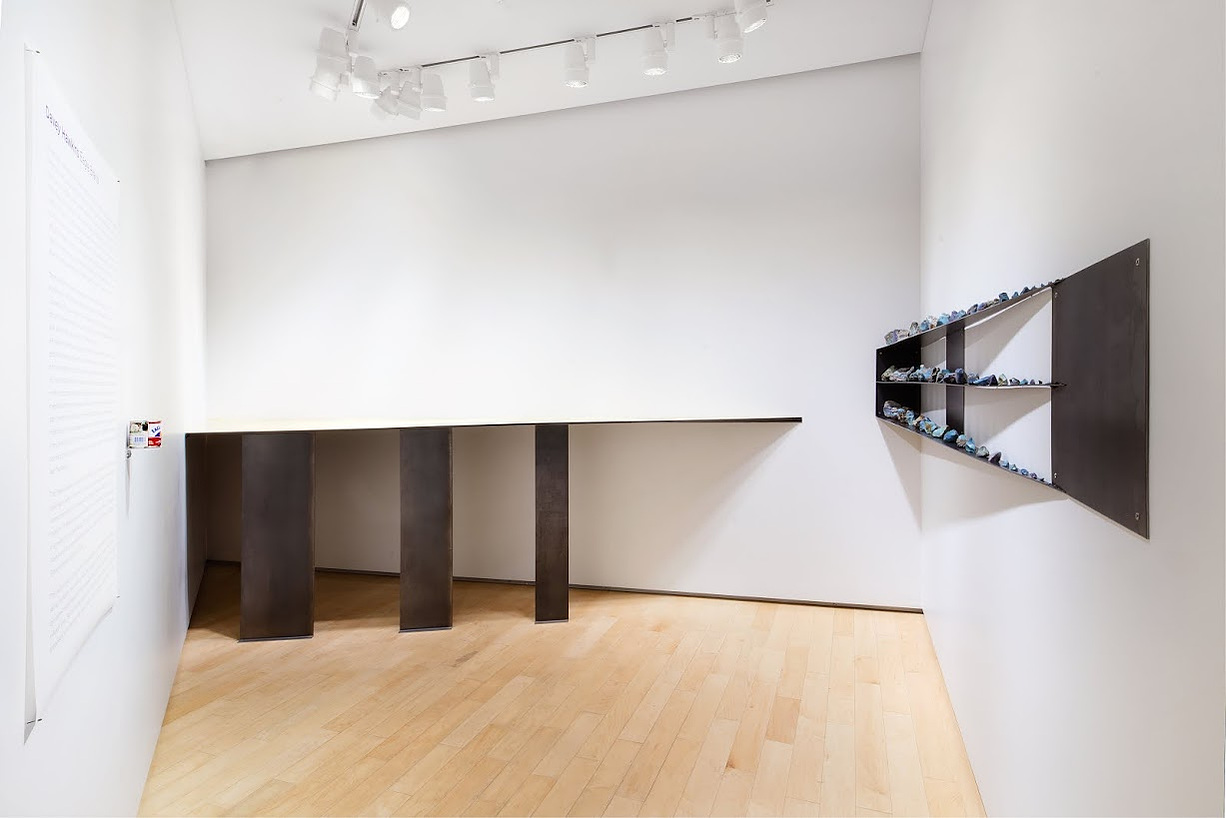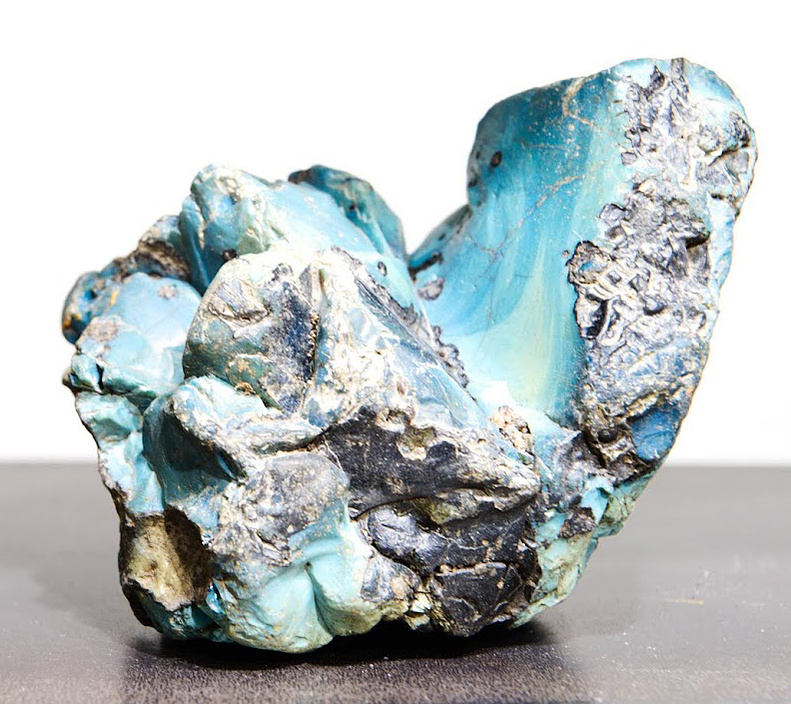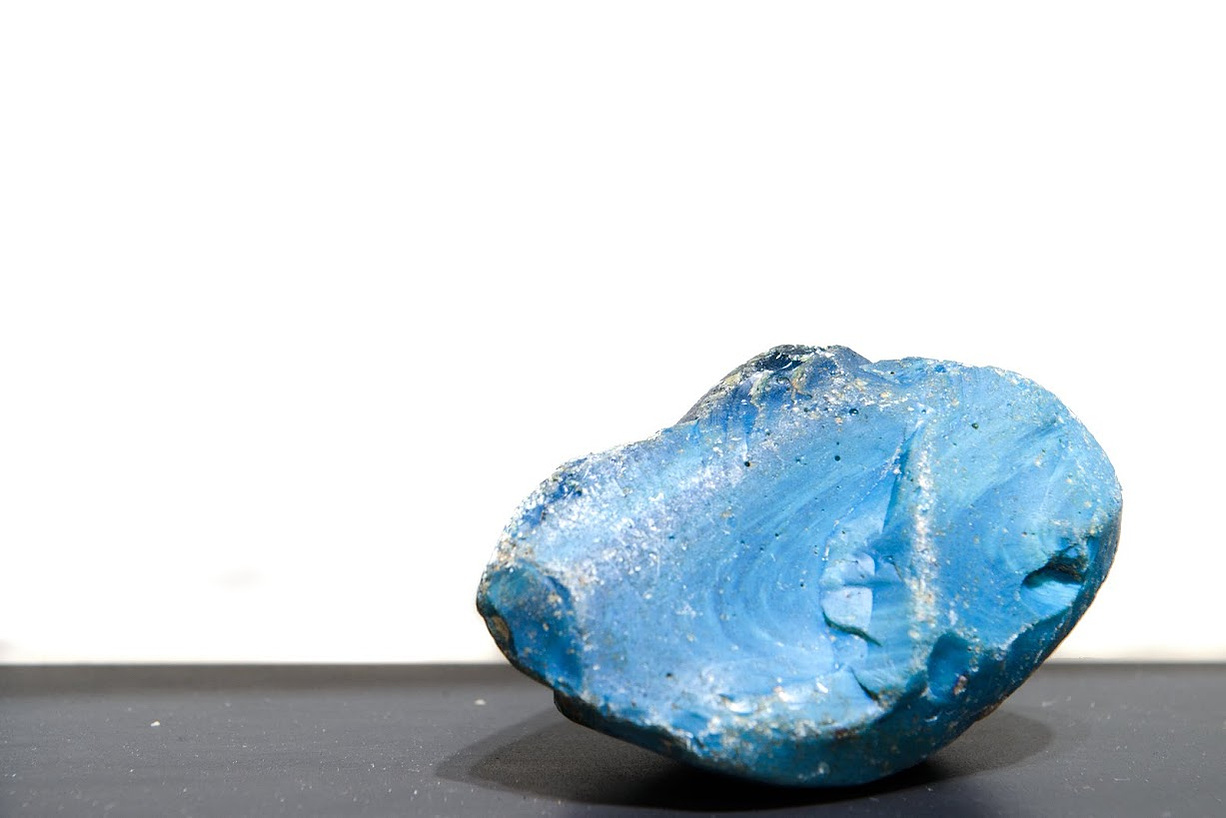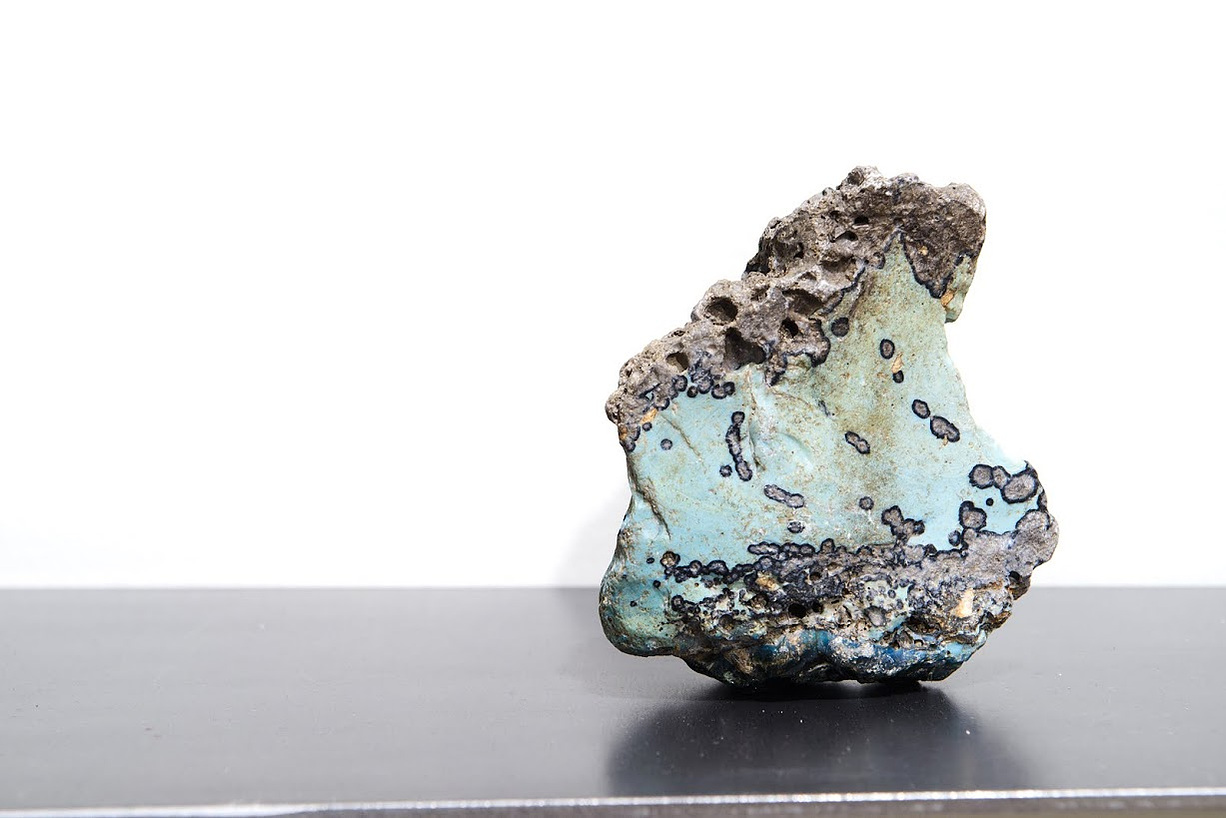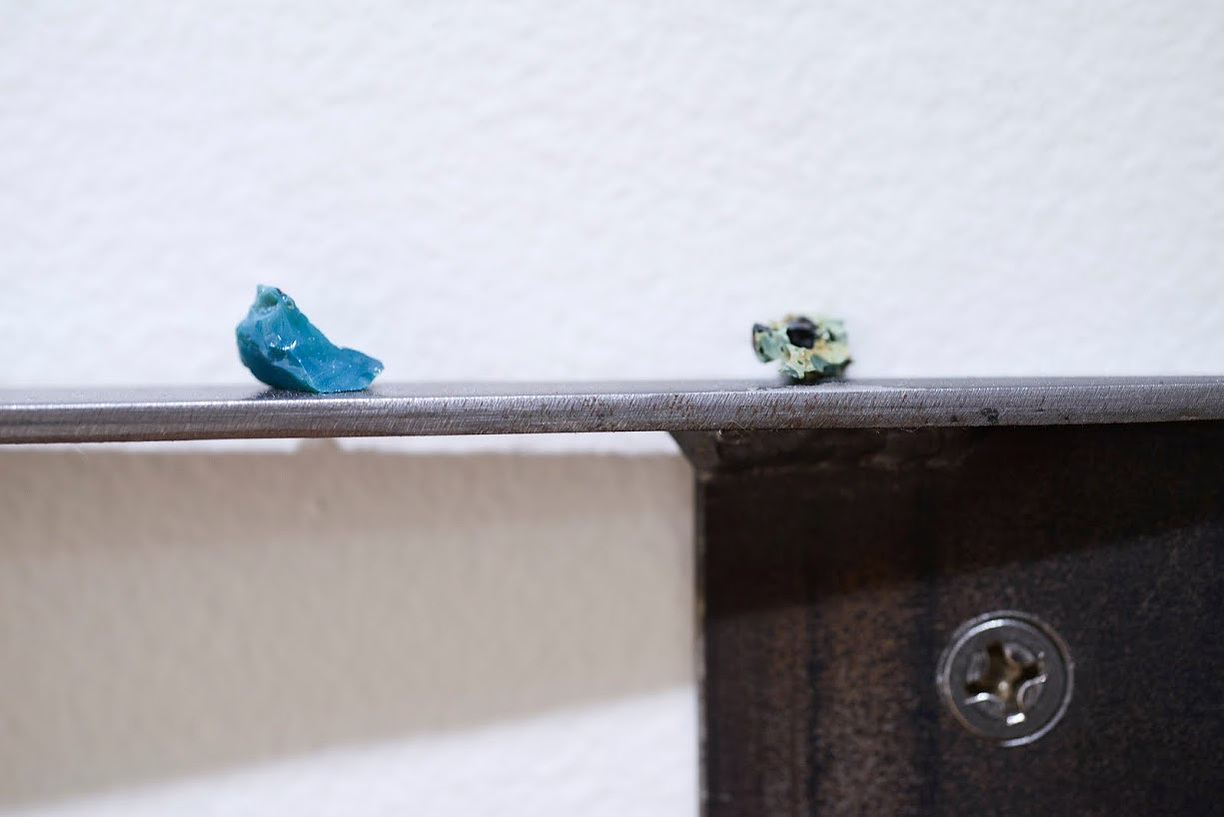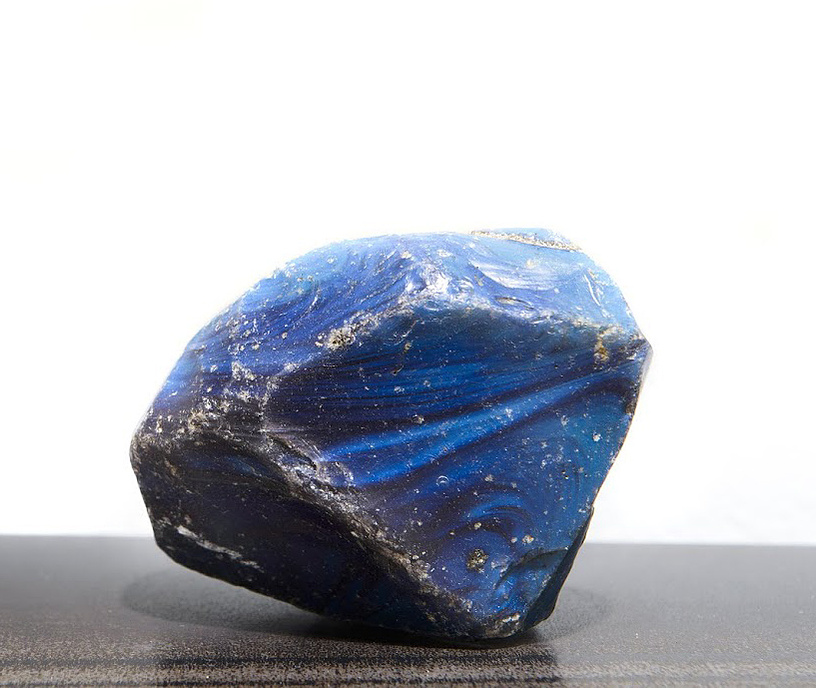
EAGLE BRAND
One morning I went fishing on Wassaic Creek in Dutchess County, NY. While wading through the knee-deep water, I kept seeing little flashes of blue on the stony creek bed beneath me. I reached down and to my delight pulled up what appeared to be a colorful gem of some kind. It had the most exquisite swirls of electric blue hues, and a glassy composition similar to obsidian. It was marvelous to look at. I forgot all about fishing and started looking for more, which were easily found. They varied in size from tiny pebbles to hefty rocks, ranging in colors of blue and purple and green. I became instantly consumed by this new discovery. Morning turned to day turned to night with a crazed miner shining his iPhone flashlight app into the black stream; it was 49er fever for these phenomenal gems! And then suddenly suspicion. Something is weird here.
These beautiful stones are not stones at all but slag, an industrial byproduct. They are entirely human made. In 1861, Gail Borden, inventor of the process of condensing milk, opened his first condensed milk factory in Wassaic, NY. There he contracted to supply this miraculous milk for the Union Army throughout the Civil War, making him a rich man and providing Union troops with an astonishing 1,300 calories from fat per 10-ounce can. He called his condensed milk Eagle Brand. Millions of tin cans were manufactured on site during and after the war, resulting in enormous quantities of slag. In the smelting process, all that is not tin mixes together at molten temperatures and is separated, hardened, crushed up and disposed of. The ore used by Borden’s first factory contained silica and copper, a combination that resulted in the vivid colors and glassy quality. These pieces of slag are alchemical stones from a land of mechanized milk and honey. Like water from the rock that Moses smote, they are rocks of an early modern miracle— taking the most perishable of local goods, milk, and making it last indefinitely in a tin can, industrialized and mobilized in mass consumer quantities for first an army, then a nation, and then the world. This very same Borden’s Eagle Brand condensed milk can be purchased in any grocery store today. You may have used it to make your pumpkin pie last Thanksgiving.
The Greeks had eidolons- apparitions of the human figure in natural forms. The Washoe may have had an eidolon of their own- the mountain known today as Mt. Rose, where the profile of a woman resting her head on the pillow of a mountain can be seen from the rooftop of this museum. The Moderns give us a new kind of eidolon: a reverse-eidolon, the apparition of nature in something human made, like slag. It’s a rock, but it isn’t, but it is! Question: if a human can make a rock the same as the earth can make a rock, where then is the rock wall erected by the Greeks between nature and culture?
This slag is a paragon artifact of early industrial capitalism, which helped fuel the westward settler colonialism (here we are in Reno, NV) inspired by manifest destiny, a doctrine influenced byAnglo-American readings of biblical passages about a promised land—the kind flowing with milk and honey. But the Moderns really outdid themselves on the milk bit. Not only did they find and possess a land flowing with milk and honey, they condensed it. The Promised Land in a can.
Davey Hawkins
